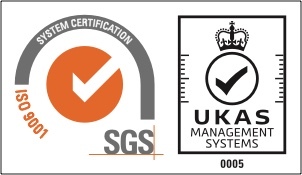
As Albert Einstein once said, “the measure of intelligence is the ability to change”. This is all too relevant in the business world because if you’re not changing, you’re not growing. Today it’s especially important for leaders to adapt and refine their styles to the needs of those they must manage, influence and inspire.
There is no ‘one size fits all’ leadership approach, but the Situational Leadership® model is a repeatable framework that allows leaders to match their behaviours with the performance needs of individuals and groups. If you’ve already developed positive relationships with team members and have a good understanding on the style that makes them tick, it’s easier to get the very best out of their talents – but you must understand their weaknesses and play to their strengths. You’ll then have a better understanding of each individual when receiving instructions for the tasks they need to complete.
Four core, common and critical leadership competencies
There are four core, common and critical competencies Situational leaders must learn to accelerate the pace and quality of employee development:
- Diagnose a person’s Performance Readiness® to complete a specific task
- Adapt their leadership approach and behaviour based on the diagnosis
- Communicate their approach in a way that followers can understand and appreciate
- Progress by facilitating the shift towards higher performance
Shifting your leadership style to meet the needs of your team
Situational Leadership® encourages leaders to consider many variables in order to decide upon the style that best suits their needs and situation. A recent CMI report found that 43% of workers rate their line managers as ineffective, lacking the ability (or drive) to recognise and nurture their talents. As a multidirectional model, Situational Leadership® can be utilised to influence performance across all levels of an organisation, which is why it’s one of the most recognised, utilised and effective leadership and influence tools in the history of behavioural sciences.
Main leadership styles
Telling
With this style, leaders make decisions and give clear directions, with the expectation their team members will accept them. It’s very much seen as a high-task, low-relationship style, with communication generally being one-way. The leader is also very involved and closely supervises people. It’s a highly effective approach for crisis scenarios as well as situations where repetitive results are needed.
Selling
A persuasive manner is key here. Leaders “sell” their ideas to the group by explaining their ideas and task directions in a convincing fashion. Leaders are also open to suggestions from peers, and they are likely to spend time listening and offering advice, whilst providing followers with additional training if needed.
Participating
With the participating leadership style, the final say is left to the employees. Leaders may participate with and support followers, but there is less of a focus on the tasks assigned, with more of an emphasis placed on the relationship between the leader, the followers, the team, and the organisation at large.
Delegating
As the name suggests, delegating leaders offer minimum guidance, whilst entrusting tasks to followers with minimal follow up. There is not so much emphasis placed on relationships, however, there is a trust between the leader and followers. Delegating leaders have complete faith that end goals will be achieved without any need for micromanagement.
Flexible Leadership
When you become a flexible leader, you’re able to adapt to changes and respond to uncertain or unpredictable circumstances, whilst still achieving your goals. If you’re eager to learn more about Situational Leadership® and how it can help you improve performance across team members whilst balancing task direction with the proper relationship behaviour, please get in touch with GBS Corporate Training today.
If you’re eager to rise to the challenge, becoming a well-equipped and adaptable leader, we also have a number of upcoming courses that you can view here.
Situational Leadership®: Building Leaders
- London: 25th - 26th March 2020
- London: 20th - 21st May 2020
- London: 15th - 16th July 2020
Should you wish to become an accredited trainer for your organization then we have our next Train the Trainer session coming up soon
Situational Leadership® - Certification
- London: 4th - 6th May 2020
Leadership Insight:
Successful leadership requires the ability to quickly make changes in order to lead in ways that work for their followers. To do this, they use a multi-directional model to ensure they communicate effectively and adopt the right style of direction that a follower requires in order to complete any given task. Much like a chameleon that is able to quickly change their colour to suit their surroundings in order to survive and thrive, a leader must be able to quickly change their style to suit their surroundings in order to influence and lead others.






